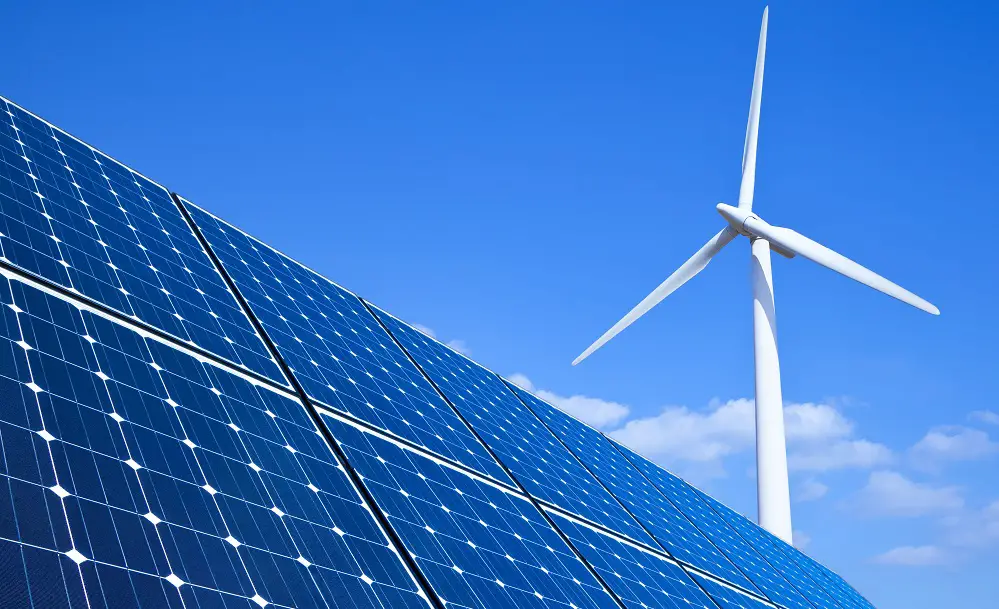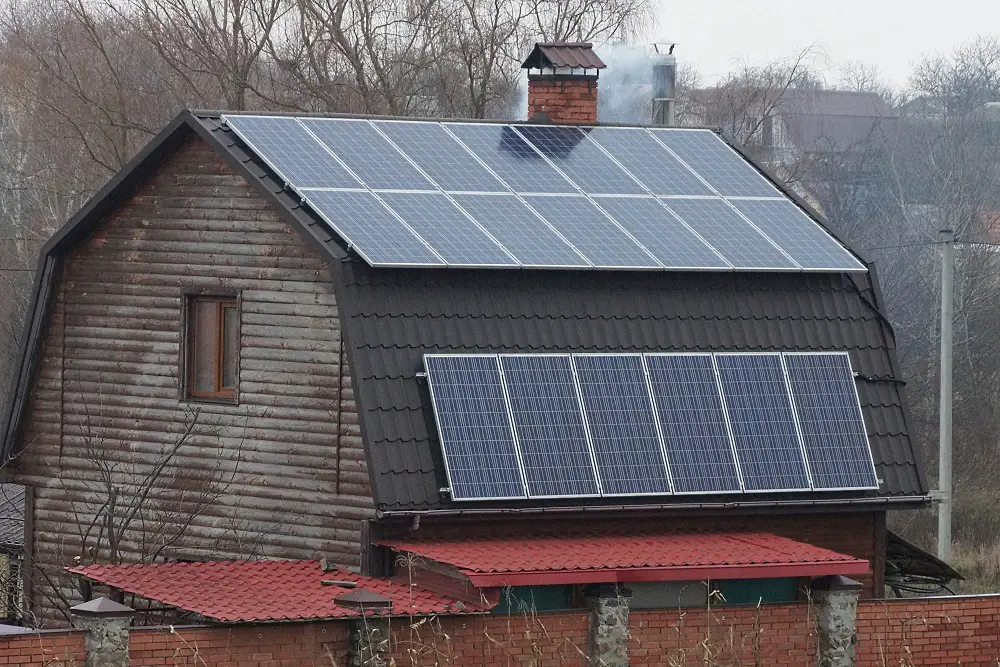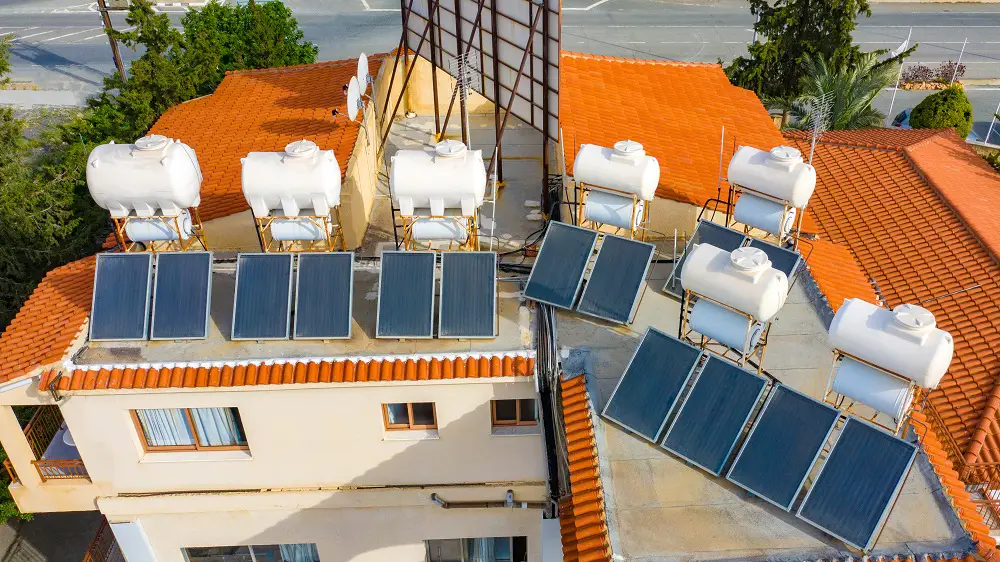Solar is both renewable AND technically nonrenewable.
Solar energy comes from the sun as radiant energy in the form of both heat and light. The sun is infinite; it is calculated that it will be at least 5 billion years before it begins to show any sign of deterioration.
The Definition of Renewable Energy

Renewable energy is simply energy that is available and does not diminish in stock despite the current rate of use. In other words, renewable energy is a form of energy that is in infinite supply and using it today does not diminish its supply in the future.
That said, however, classifying energy sources as renewable can be difficult. For instance, when you bring in the issue of large timescale, no energy source is truly renewable.
While the sun has been in existence for 4.6 billion years, and it has been present throughout the existence of human species, there will come a time when it will no longer exist.
Approximately 600 million tons of hydrogen fuse into helium every second in the core of the sun. In this process, 4 million tons of matter is converted into energy. However, astronomers estimate that in about 5 to 10 billion years, the sun will run out of hydrogen and eventually die. As such, in the grandness of time, even solar energy that we receive here on planet earth is finite and will come to an end. In this line of thought, solar energy is not a pure renewable/endless energy source.
Humans, however, have a hard time grasping timescale running into billions of years. Additionally, it does not make sense to look that far into the future. It is for this reason that we add a caveat of the human timescale when defining the renewability of energy sources. Confining timescales to limits brings solar energy into the renewable energy source bracket.
Aside from the timescale involved in the replenishment of the energy source, the definition of what a renewable energy source is, also takes into consideration the rate of use and replenishment.
A renewable energy resource is a source whose rate of natural replenishment negates diminishing of stock or the availability of the resource in the future. In this regard, the rate of energy harvest should not affect the rate of energy generation in the future.
In the case of solar energy, the amount of solar energy that humanity harvests does not affect the energy produced in the future.
This is in stark contrast to non-renewable energy sources such as fossil fuels. Fossil fuels are created over millions of years. At the current rate of extraction, there is no feasible way to replenish the fossil fuels. As such, once the oil deposits are exhausted, there is no more oil to extract. This makes fossil fuels a non-renewable source of energy.
Solar energy is, therefore, renewable since it is continuously replenished and within the human timescale.
Other Elements to Consider When Defining Renewability of Solar Energy
Granted, we will continue receiving solar radiation on earth for the foreseeable future. It is essential, nonetheless, to factor in the technology that makes the harnessing of solar energy possible. To this end, we should ask whether:
- The devices used to manufacture solar-energy harnessing devices are abundant or rare
- If the materials used to harness solar energy are recyclable.
For instance, to generate electricity from solar radiation, use photovoltaic technology. As such, the materials used in the manufacture of solar panels should be abundant and should be recyclable. In the case of solar panels, the cells are made of silicon, the second most abundant material in the earth’s crust (oxygen is the most abundant element in the earth’s crust). Additionally, solar panels use rare earth minerals, copper for wiring, and aluminum for framing.
Furthermore, after the typical 25 years lifespan of solar panels, almost all of the glass in the solar panel can be reused while the copper, aluminum, and rare earth minerals can be recycled. This means that in the case of electricity generation from solar energy using solar panels, there is ample material to continue manufacturing solar panels.
Renewable Energy vs Sustainable Energy
Sustainable energy takes into consideration the energy source, the emissions from the energy sources, the manufacturing process, and the disposal of the energy source of energy-harnessing equipment. Sustainability covers the entire cycle of energy production.
Regarding its renewability, solar energy is renewable as the sun continuously produces solar radiation. Moreover, the sun will continue to provide the earth with ample solar energy for the foreseeable future.
On the emission front, solar radiation is clean. It does not produce toxic by-products. For instance, when we use solar panels to produce electricity, the solar panel will create zero carbon emissions. Compare this to the over 3,000,000 lbs of CO2 that a typical coal power plant produces annually.
The Negative Environmental Impact of Solar Power
The production of solar panels does produce CO2 and sulfur dioxide, albeit in small amounts. There is also an intensive use of electricity and the production of toxic chemical by-products to contend with.

Production of solar panels relies heavily upon quartz, the natural mineral extracted from the earth that can be easily converted into silicone for the absorption and conduction of solar rays.
However, refining quartz to pure silicon is an energy-intensive process that produces carbon dioxide and sulfur dioxide.
Silicon refining processes also make of hydrochloric acid. This creates silicon tetrachloride, which is a toxic substance. On the other hand, cleaning the silicon wafer that makes the PV cells requires the use of hydrofluoric acid.
There have been cases of accidental or deliberate discharge of the toxic chemicals used in the manufacturing process or produced as by-product which harm the environment. As such, while solar energy is an entirely renewable source, it is, however, not 100% sustainable.
Companies and governments have taken steps to lower the emission related to the manufacturing process of solar energy technology. For instance, the government of China, a leading manufacturer of solar panels, require manufacturers to recycle a minimum of 98.5% of the silicon tetrachloride.
Studies are ongoing to eradicate the use of tetrachloride. With the pace at which solar technology is advancing, this shouldn’t be in the too distant future.
Solar Power Sustainability Score
Although solar panels generate 30 times more power during their lifetime than they use to be manufactured, their sustainability is still regularly called to account.
The Silicone Valley Toxics Coalition releases an annual scorecard that rates every solar manufacturer and assigns them with a sustainability score.
Several factors are monitored before each company receives its rating, shown as a percentage.
Solar panel manufacturers are scored on their responsibility to workers, communities, the environment, and their commitment to recycling.
Material and water usage are monitored, along with emission reduction, and toxicity levels.
The sustainability rating is a well-regarded solar industry standard.




